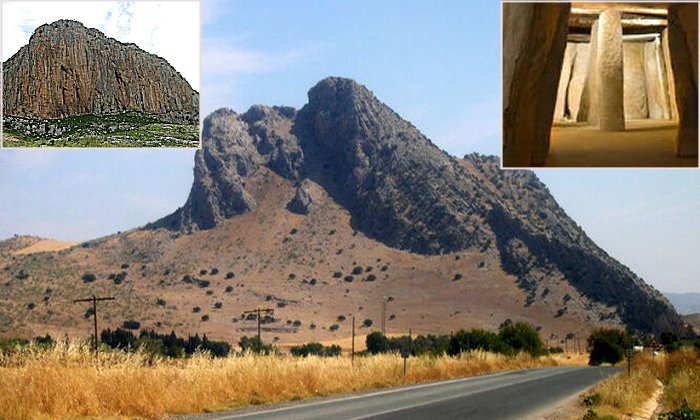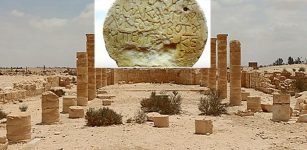Mysterious Menga Dolmen: A New Very Old Monument Discovered
Conny Waters - AncientPages.com - The area of the Piedras Blancas site, Antequera, Málaga, Spain, has been excavated and studied for several years to learn about the uses of this very ancient place in prehistory.
 Menga Dolmen. source
Menga Dolmen. source
Dolmens of Antequera Site, Spain, dates back to the Neolithic Age and among them, there is the famous Dolmen of Menga (Spanish: Dolmen de Menga), a megalithic burial mound called a tumulus, a long barrow form of a dolmen with the entrance made up of an enormous trilith that dates back to approximately 3750-3650 BC.
This monument, together with the Matacabras shelter and its cave paintings, would have formed a sacred space for the Neolithic communities of the region before the great Menga dolmen was built. The Menga Dolmen is one of the largest known ancient megalithic structures on the European continent.
It is 27.5 meters (90 ft) long, 6 meters (20 ft) wide and 3.5 meters (11 ft) high, and was built with thirty-two megaliths, of which the largest weighing about 180 tonnes (200 tons). The whole construction is covered with a tumulus of 50 m in diameter.
 Antequera Dolmens Site, Spain. Image credit: Javier Pérez González - source
Antequera Dolmens Site, Spain. Image credit: Javier Pérez González - source
The path leading into the center, the stone structure was covered with soil and built up into the hill that we can see today.
Menga was not oriented to sunrise, as is the case with 95 percent of the megalithic monuments located in southern Iberia. Rather it is slightly to the north of the summer solstice, towards La Peña de Los Enamorados, a mountain that stands out in the Antequera plain, where the archaeologists from the University of Seville have discovered a small cave with both visual and symbolic links, all leading to the Menga dolmen.
Why was this extraordinary monument as Menga created? Did its chamber serve as a grave for the royal families?
In the 19th century, archaeologists have been working in the area of Menga. They opened the grave and examined; they also found the skeletons of several hundred people inside.
 Dolmen of Menga. source
Dolmen of Menga. source
It is believed that the newly found monument would have played an important role as a part of a sacred space for the Neolithic people living in the area before the Menga Dolmen was built.
On the summer solstice, June 21, the morning sun shines above the top of the La Peña de Los Enamorados and straight along the mysterious Menga dolmen's entrance corridor.

Who were the Neolithic inhabitants of the region and who built Menga and for what purposes?
It is likely that Menga Dolmen was used as a refuge, dwelling, or even animal pen but materials on this subject have never been the subject of any detailed scientific research. A recent study focuses on understanding the importance of the Antequera megaliths in prehistory and obtaining data on the site of Piedras Blancas, the neighboring site of Menga Dolmen.
Written by Conny Waters - AncientPages.com Staff Writer
Expand for references



















